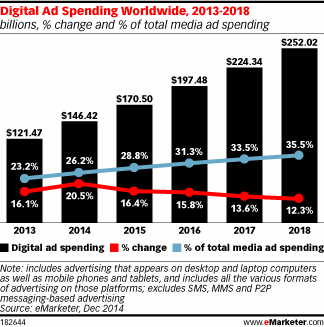Mirip dengan posting sebelumnya berjudul Facebook's older audience , artikel yang dikutip dari Marketeers.com juga mengulas tentang sosial media Facebook
PARA REMAJA MULAI BOSAN DENGAN FACEBOOK
Facebook merupakan jejaring sosial terbesar di dunia. Sampai Juni 2014 tercatat pengguna Facebook mencapai lebih dari 1,3 milliar pengguna di seluruh dunia.
Pertumbuhan Facebook bisa dibilang sangat pesat. Ketika pertama kali didirikan pada tahun 2004, Facebook baru memiliki jumlah pengguna sebanyak 1 juta. Hanya dalam tempo satu dekade Facebook sudah meraup lebih dari 1 milliar pengguna.
Bagaimana dengan di Indonesia? Hingga September 2014, Facebook memiliki sekitar 69 juta pengguna di Indonesia. Namun begitu, di negara ini, walaupun setiap tahunnya ada pengguna baru sesungguhnya pengguna aktif Facebook mengalami penurunan.
Temuan studi GlobalWebIndex yang melibatkan 170 ribu responden di 32 negara menemukan bahwa pengguna aktif Facebook secara total mengalami penurunan. Berdasarkan riset GlobalWebIndex, statistik pengguna Facebook yang masih berkirim pesan kepada teman-temannya mengalami penurunan.
Pada kuartal pertama 2013 masih ada sekitar 512 juta pengguna, namun bila dibandingkan kuartal pertama tahun 2014 terjadi penurunan sekitar 20%. Di kuartal pertama tahun 2014 jumlah pengguna Facebook menjadi 402 juta. Angka ini terus menurun sampai kuartal ketiga tahun 2014. Hingga kuartal ketiga tahun ini, pengguna Facebook yang masih berkirim pesan kepada rekan-rekannya melorot hingga 313 juta.
Penurunan ini terjadi pada para pengguna Facebook yang masih usia masih remaja. Temuan GlobalWebIndex mendapatkan 64% remaja sudah jarang aktif di Facebook. Bahkan, 50% kelompok remaja menganggap Facebook tidak semenarik dahulu. Sebagian dari mereka juga beranggapan bahwa Facebook dianggap membosankan, sehingga para remaja mulai mengurangi waktu penggunaan jejaring sosial tersebut.
"Ada sentimen tertentu terhadap produk buatan Facebook, meskipun kebanyakan orang sudah terbiasa dengan produk Facebook, namun sebagian lainnya mulai bosan," ujar Head of Trends GlobalWebIndex Jason Mander di jakarta (25/11/2014)
Selain alasan-alasan tersebut juga beberapa alasan lainnya yakni mereka lebih tertarik menggunakan aplikasi seperti Instagram dan Path yang lebih privat dan aplikasi berbagi pesan seperti WhatsApp, WeChat dan Line. "Polanya, orang merasa tidak nyaman untuk membagi informasi seputar keseharian mereka di jejaring sosial. Mereka beralih ke aplikasi mobile messaging karena mereka menilai hal itu lebih aman dan bisa dikontrol," ujar Jason.
Namun yang menarik adalah aplikasi Facebook Messenger sampai November 2014 berhasil meraih lebih dari 500 juta pengguna aktif semenjak pertama kali diluncurkan pada agustus tahun 2011. Facebook memisahkan layanan berbagi pesan melalui smartphone dari aplikasi utama Facebook sejak Agustus 2014. Untuk itu, para pengguna yang ingin berbagi pesan kepada sesama rekan harus mengunduh Facebook Messenger terlebih dahulu.
Selain Facebook Messenger, Facebook juga memiliki aplikasi lainnya seperti WhatsApp dan Instagram. Instagram dibeli oleh Facebook senilai US$ 1 milliar pada tahun 2012, yang saat ini sudah memiliki lebih dari 200 juta pengguna. Sedangkan WhatsApp dibeli oleh Facebook pada Februari 2014 dengan nilai US$ 19 milliar. Saat ini WhatsApp memiliki lebih dari 600 juta pengguna.











